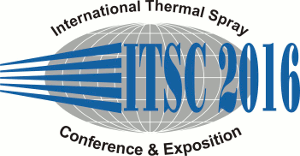
|
4742 |
|
Thursday, May 12, 2016, Yellow River Hall 11:20 AM Power Generation III |
|
Suspension plasma spraying of TBCs on industrial gas turbine parts |
|
Francesco Bozza* / Turbocoating S.p.a., Italy Nelso Antolotti / Turbocoating S.p.a., Italy Martin Thoma/ MT Consulting, Germany Enea Ghidini/ Turbocoating S.p.a., Italy Luca Tagliaferri/ Turbocoating S.p.a., Italy |
|
In the recent past years several processes and microstructures have been developed and investigated to improve the high-temperature behavior of the existing thermal barrier coating (TBC) systems. Among them, suspension-plasma-spraying (SPS) was found to be very promising. In the SPS process the standard feedstock powders are replaced by finer particles (sub-micrometric or nano-sized), carried into the flame by a liquid media. The use of finer particles, together with the process itself, allowed the deposition of coatings having new microstructures (e.g. columnar and feather like architectures). Laboratory-scale tests demonstrated that SPS TBCs exhibit a superior thermal shock resistance and a similar thermal conductivity compared to standard coatings. The investigations performed in the recent years only focused on samples having simple geometries (pins, buttons, plates). As a consequence, the aim of the present work was to shift from laboratory-scaled samples to real gas turbine (IGT) parts, to investigate the microstructure of the coating as a function of the component geometries. Samples were sprayed and tested at high-temperature as well, to compare the behavior of new architectures with standard TBCs. The most promising SPS TBC systems were then sprayed on real parts. Optical microscopy and scanning emission microscopy were used to evaluate the microstructure of the coating across the entire component (i.e. airfoils, platforms, fillets). |